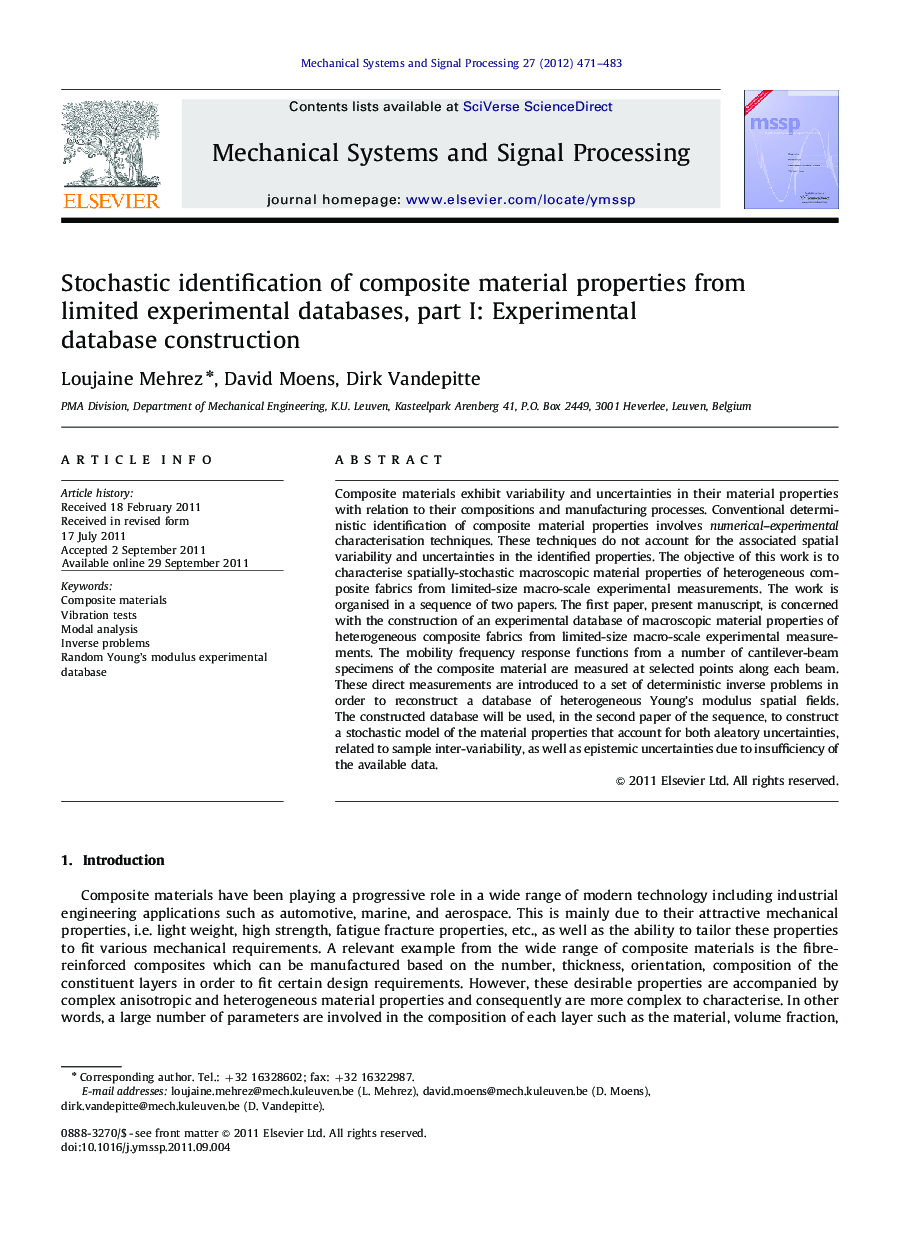| Article ID | Journal | Published Year | Pages | File Type |
|---|---|---|---|---|
| 561509 | Mechanical Systems and Signal Processing | 2012 | 13 Pages |
Composite materials exhibit variability and uncertainties in their material properties with relation to their compositions and manufacturing processes. Conventional deterministic identification of composite material properties involves numerical–experimental characterisation techniques. These techniques do not account for the associated spatial variability and uncertainties in the identified properties. The objective of this work is to characterise spatially-stochastic macroscopic material properties of heterogeneous composite fabrics from limited-size macro-scale experimental measurements. The work is organised in a sequence of two papers. The first paper, present manuscript, is concerned with the construction of an experimental database of macroscopic material properties of heterogeneous composite fabrics from limited-size macro-scale experimental measurements. The mobility frequency response functions from a number of cantilever-beam specimens of the composite material are measured at selected points along each beam. These direct measurements are introduced to a set of deterministic inverse problems in order to reconstruct a database of heterogeneous Young's modulus spatial fields. The constructed database will be used, in the second paper of the sequence, to construct a stochastic model of the material properties that account for both aleatory uncertainties, related to sample inter-variability, as well as epistemic uncertainties due to insufficiency of the available data.
► Inverse inference of spatial experimental database of random heterogeneous composite material. ► Database consists of nodal realisations of macroscopic Young's modulus modelled as a random field. ► Database accounts for inter- and intra-variability; sample to sample and spatial variability. ► Mobility frequency response functions from 21 cantilever-beam specimens are measured directly. ► The ensemble of measurements at selected points on each specimen is an input to one inverse analysis.
